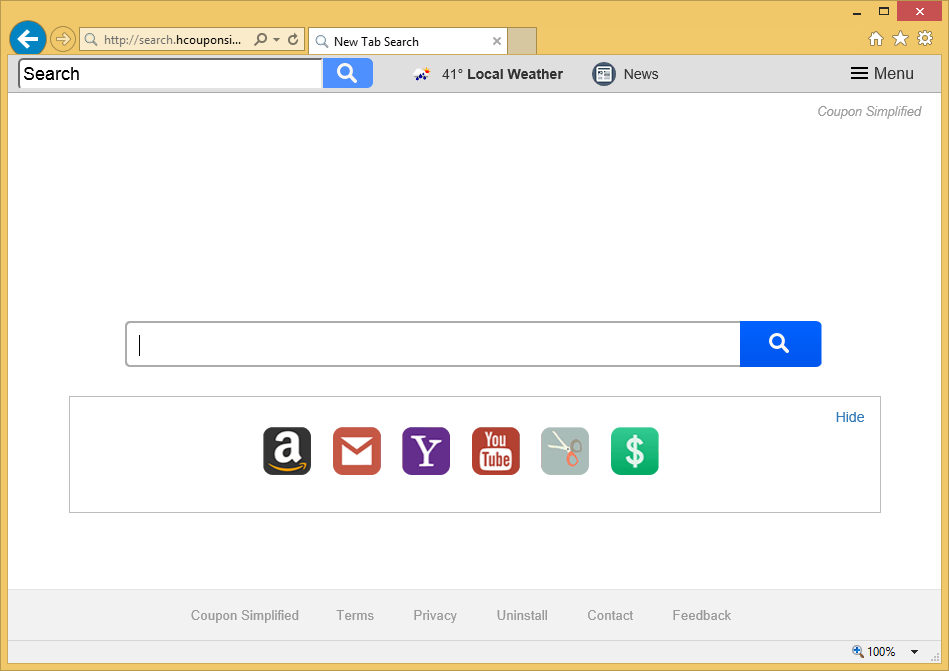About QuickCouponSearch
QuickCouponSearch browser hijacker is also known as a redirect virus, and is generally an infection that targets Macs. They are rather minor infections that shouldn’t cause direct damage to your Mac. The hijackers aren’t entirely benign, however, because their prime goal is to redirect you to sponsored pages and generate profit. Hijackers install pretty slyly but once they’re in, their presence become highly obvious. You’ll note your browser acting weirdly, such as redirects to random websites, sponsored content shown among legitimate search results, etc. Users who aren’t familiar with what browser hijacker are might not associate the weird behaviour with the infection. A simple search of the signs/website redirected to with Google normally leads users to the right conclusion that it is a hijacker.
Your browser’s settings will be changed, in addition to you being redirected. You’ll notice that your browser now has a different homepage/new tabs, and it may be difficult to reverse these modifications. By performing those changes, hijackers are able to redirect you.
Hijackers can’t install by themselves since they’re not malicious software or viruses, even if plenty of users consider them as such. It normally happens without users noticing, but they install the hijackers themselves. The hijackers, adware and potentially unwanted programs (PUPs), use software bundling to install, which basically is attaching them to freeware as additional offers permitting them to install alongside. Continue to the proceeding section to learn how you could avoid these undesirable installations in the future.
While it may not be that dangerous, we suggest that you uninstall QuickCouponSearch from your Mac promptly. The hijacker won’t let you browse normally but it might also expose you to dangerous content including malware and scams.
How are QuickCouponSearch spread
Browser hijackers use free programs to install, as we have said before. Software bundling is how this method of distribution is referred to, and in basic terms it is attaching hijackers and other extra offers to legitimate freeware. Program bundling is a quite frowned upon because while the items can install alongside the freeware, users don’t at first notice them. For future reference, preventing these items from installing is not complicated, if you pay attention when installing free software.
It is quite essential that you select Advanced (Custom) settings when installing freeware. The offers will not be made visible if you use Default mode during installation. Advanced will allow you to uncheck everything, in addition to making all offers visible. All you need to do is deselect those boxes. Picking Advanced settings and unmarking the items takes minimal time, while browser hijackers removal would take a much longer time. You will block loads of rubbish software from installing as long as you pay attention to software installation.
Is the QuickCouponSearch harmful
Browser hijacker signs will be instantly apparent as your Safari, Google Chrome or Mozilla Firefox browser will be taken over, and odd redirects will occur. As soon as you open your browser, you you will instantly be redirected to the site the hijacker’s promoting since it has been set as your homepage. Your browser will also have another search engine. The hijacker will expose you to altered search results by redirecting you to its sponsored website every time you use your browser address bar to search. Those results will possibility be altered to include sponsored unconnected sponsored content. Users are redirected to those sponsored pages so that hijackers could generate profit and traffic. The random won’t only get on your nerves but they can also be damaging. Until the redirect virus is no longer present, it’s not suggested to interact with any sponsored or advertisement content. Because hijackers don’t check whether the pages they redirect users to are secure, you could easily be led to harmful ones. One of those sponsored web pages may be hosting dangerous malware or trying to fool you into falling for some type of scam. Despite the fact that hijackers do not do direct damage to your Mac, they should not be kept installed.
It might not be immediately obvious, but hijackers also spy on you, they collect data about what you search for, content you engage with, the web pages you visit, your IP address and all kinds of other data. It isn’t rare for hijackers to share that information with third-parties as well, which is unlikely to be something you want.
To put it shortly, the hijacker is very troublesome because it installs without permission, it makes unwanted browser changes, and redirects to possibly harmful pages. Even if it may not be the most severe infection, you need to delete QuickCouponSearch as quickly as possible.
QuickCouponSearch deletion
We’d strongly suggest using anti-spyware programs to remove QuickCouponSearch because that is the simplest way. The spyware removal program will guarantee successful threat removal. For more tech-savvy users, it also should not be overly difficult to delete QuickCouponSearch manually. You will be able to change back your browser’s settings with little problems after QuickCouponSearch deletion.
Offers
Download Removal Toolto scan for QuickCouponSearchUse our recommended removal tool to scan for QuickCouponSearch. Trial version of provides detection of computer threats like QuickCouponSearch and assists in its removal for FREE. You can delete detected registry entries, files and processes yourself or purchase a full version.
More information about SpyWarrior and Uninstall Instructions. Please review SpyWarrior EULA and Privacy Policy. SpyWarrior scanner is free. If it detects a malware, purchase its full version to remove it.

WiperSoft Review Details WiperSoft (www.wipersoft.com) is a security tool that provides real-time security from potential threats. Nowadays, many users tend to download free software from the Intern ...
Download|more


Is MacKeeper a virus? MacKeeper is not a virus, nor is it a scam. While there are various opinions about the program on the Internet, a lot of the people who so notoriously hate the program have neve ...
Download|more


While the creators of MalwareBytes anti-malware have not been in this business for long time, they make up for it with their enthusiastic approach. Statistic from such websites like CNET shows that th ...
Download|more
Quick Menu
Step 1. Uninstall QuickCouponSearch and related programs.
Remove QuickCouponSearch from Windows 8
Right-click in the lower left corner of the screen. Once Quick Access Menu shows up, select Control Panel choose Programs and Features and select to Uninstall a software.
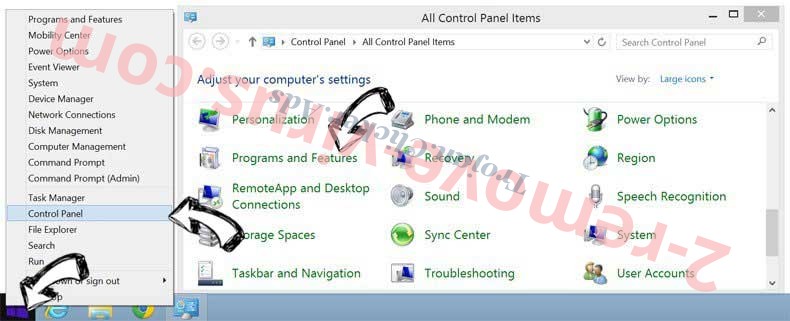

Uninstall QuickCouponSearch from Windows 7
Click Start → Control Panel → Programs and Features → Uninstall a program.
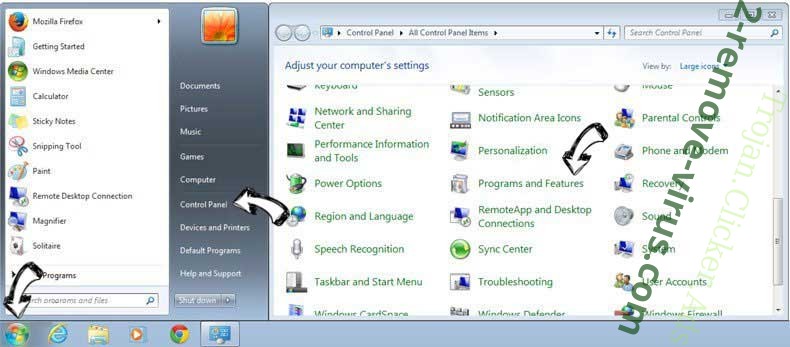

Delete QuickCouponSearch from Windows XP
Click Start → Settings → Control Panel. Locate and click → Add or Remove Programs.
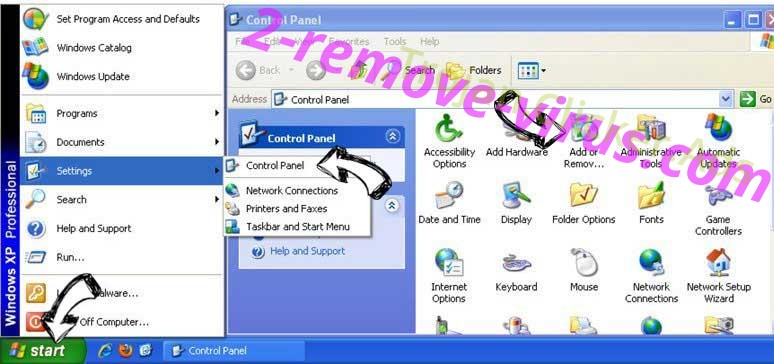

Remove QuickCouponSearch from Mac OS X
Click Go button at the top left of the screen and select Applications. Select applications folder and look for QuickCouponSearch or any other suspicious software. Now right click on every of such entries and select Move to Trash, then right click the Trash icon and select Empty Trash.
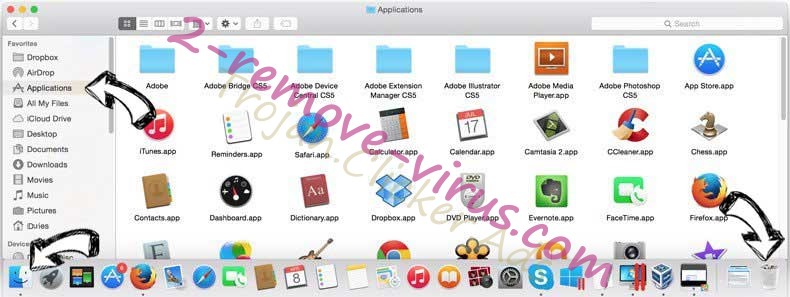

Step 2. Delete QuickCouponSearch from your browsers
Terminate the unwanted extensions from Internet Explorer
- Tap the Gear icon and go to Manage Add-ons.

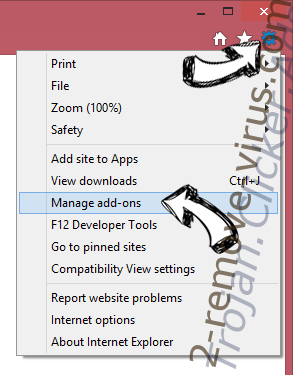
- Pick Toolbars and Extensions and eliminate all suspicious entries (other than Microsoft, Yahoo, Google, Oracle or Adobe)

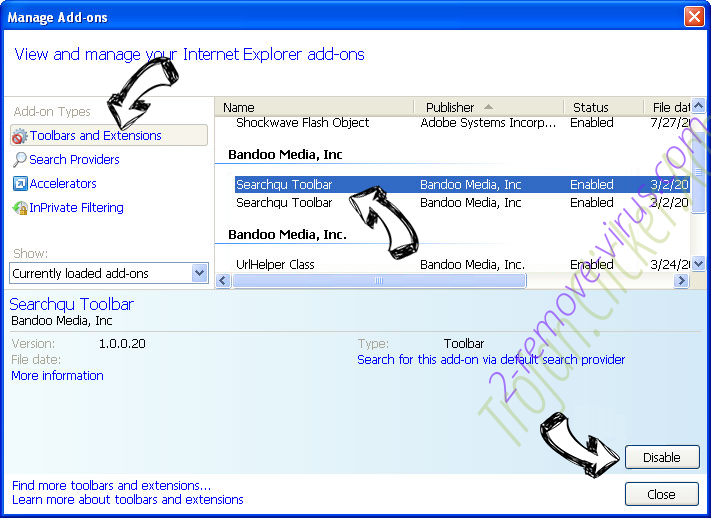
- Leave the window.
Change Internet Explorer homepage if it was changed by virus:
- Tap the gear icon (menu) on the top right corner of your browser and click Internet Options.

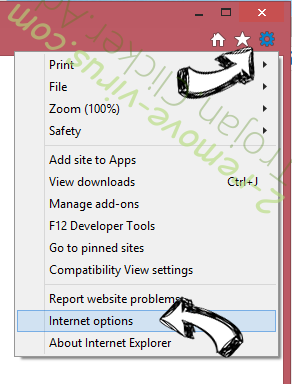
- In General Tab remove malicious URL and enter preferable domain name. Press Apply to save changes.

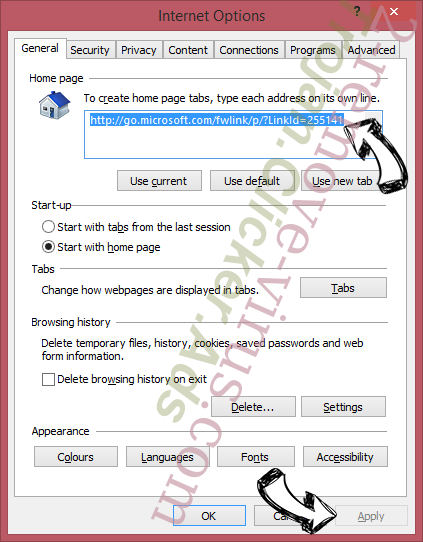
Reset your browser
- Click the Gear icon and move to Internet Options.

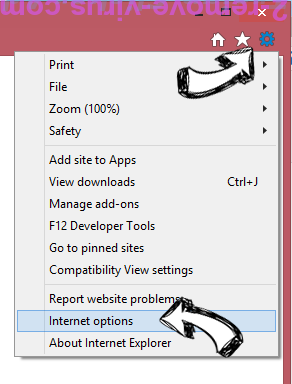
- Open the Advanced tab and press Reset.

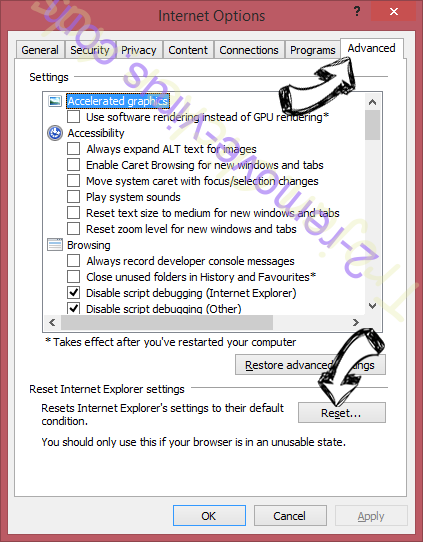
- Choose Delete personal settings and pick Reset one more time.

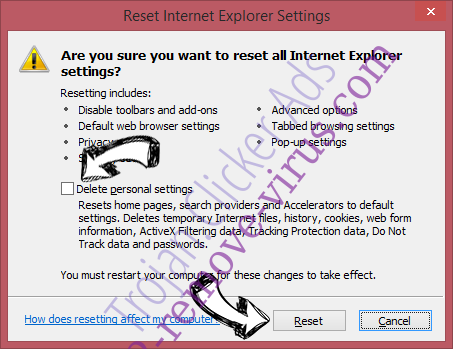
- Tap Close and leave your browser.

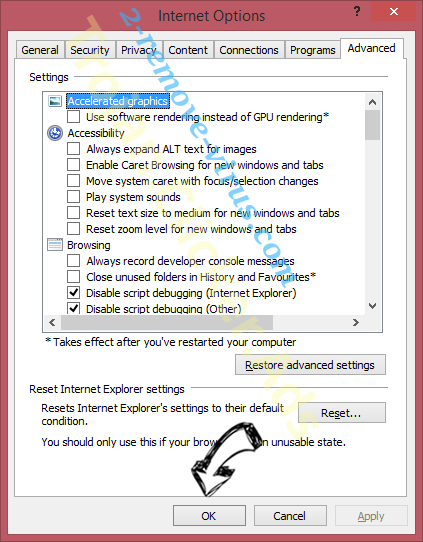
- If you were unable to reset your browsers, employ a reputable anti-malware and scan your entire computer with it.
Erase QuickCouponSearch from Google Chrome
- Access menu (top right corner of the window) and pick Settings.

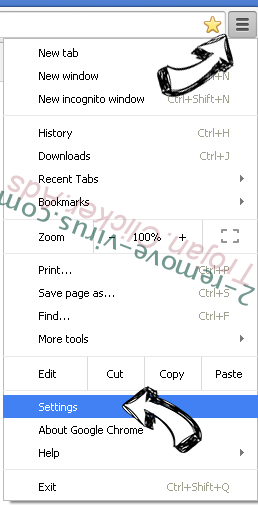
- Choose Extensions.

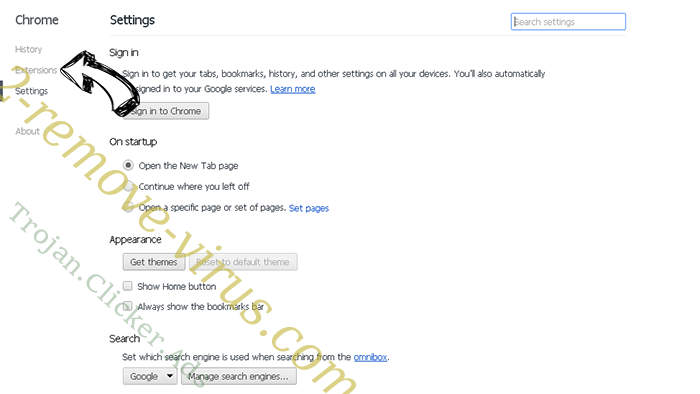
- Eliminate the suspicious extensions from the list by clicking the Trash bin next to them.

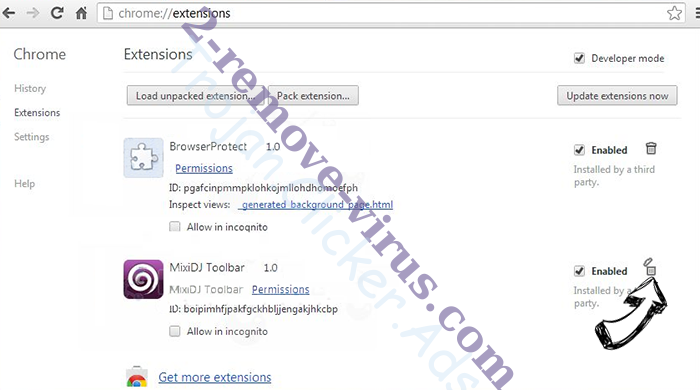
- If you are unsure which extensions to remove, you can disable them temporarily.

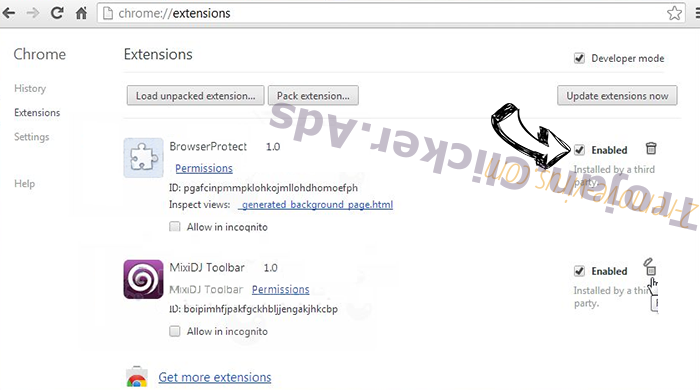
Reset Google Chrome homepage and default search engine if it was hijacker by virus
- Press on menu icon and click Settings.

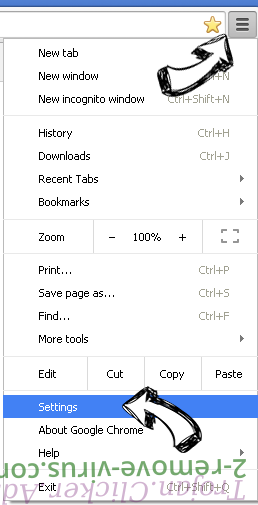
- Look for the “Open a specific page” or “Set Pages” under “On start up” option and click on Set pages.

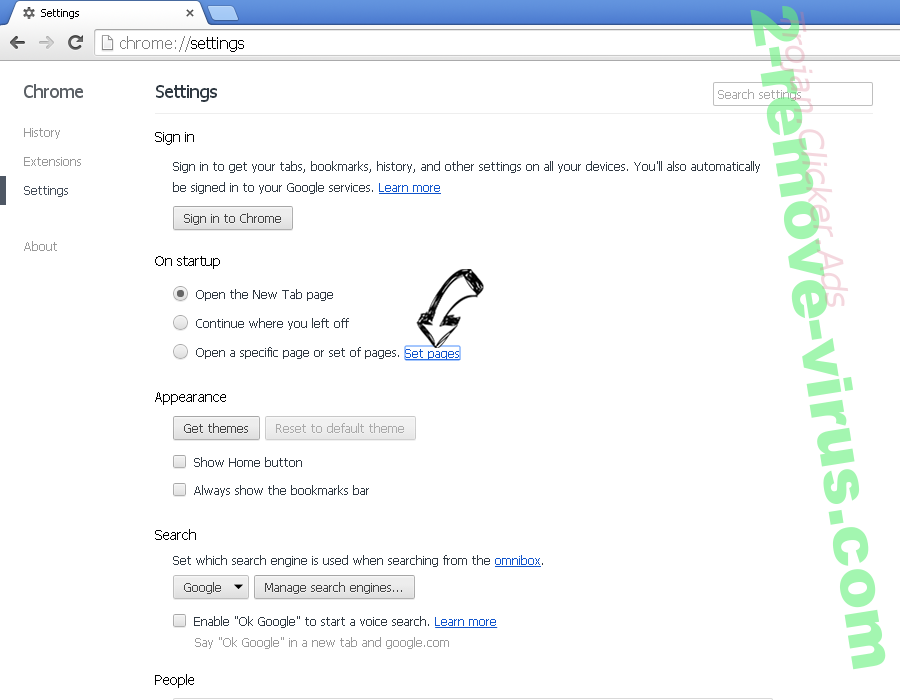
- In another window remove malicious search sites and enter the one that you want to use as your homepage.

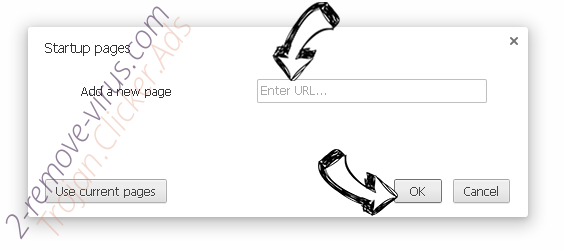
- Under the Search section choose Manage Search engines. When in Search Engines..., remove malicious search websites. You should leave only Google or your preferred search name.

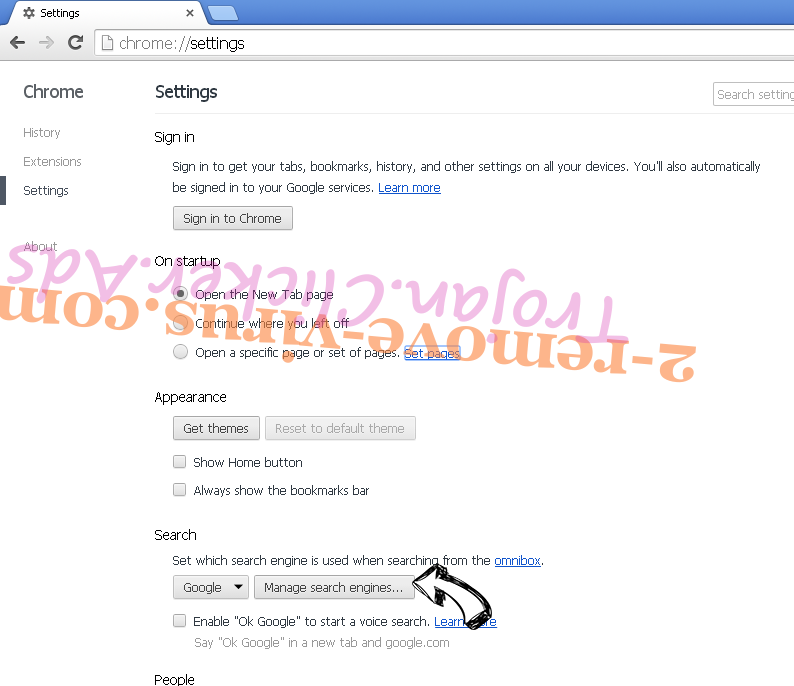

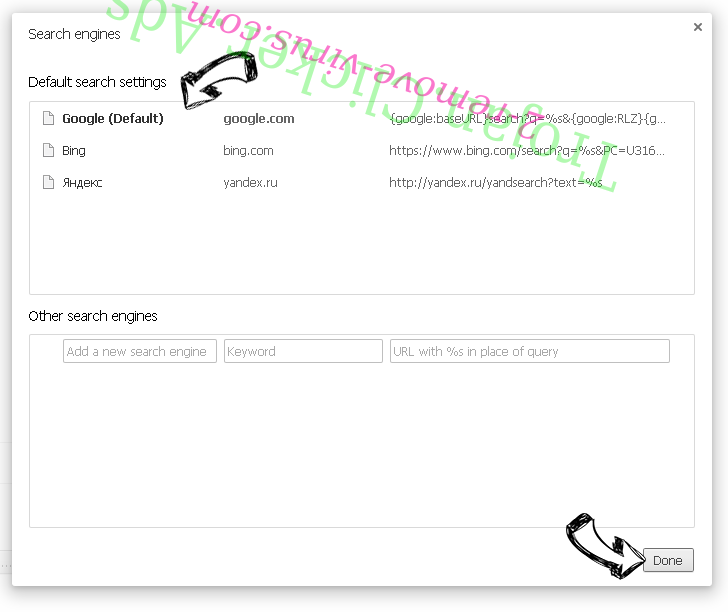
Reset your browser
- If the browser still does not work the way you prefer, you can reset its settings.
- Open menu and navigate to Settings.

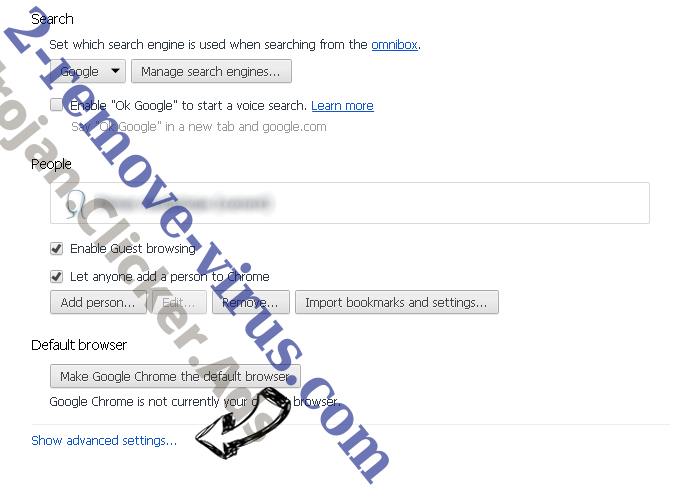
- Press Reset button at the end of the page.

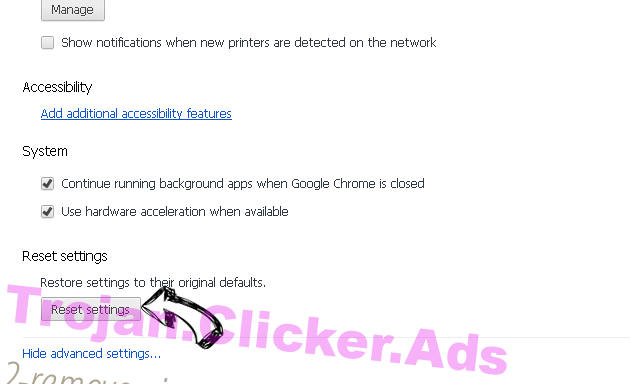
- Tap Reset button one more time in the confirmation box.

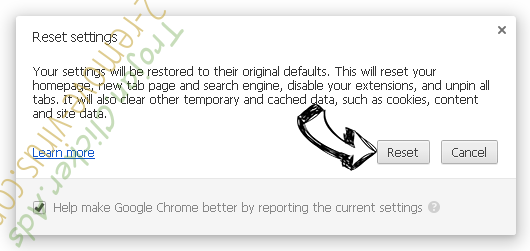
- If you cannot reset the settings, purchase a legitimate anti-malware and scan your PC.
Remove QuickCouponSearch from Mozilla Firefox
- In the top right corner of the screen, press menu and choose Add-ons (or tap Ctrl+Shift+A simultaneously).

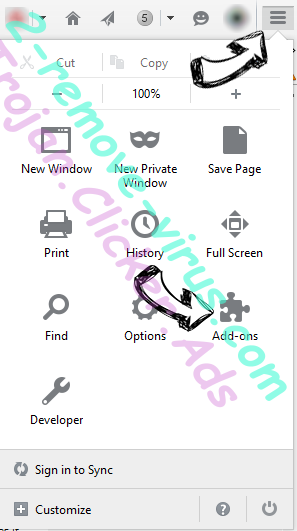
- Move to Extensions and Add-ons list and uninstall all suspicious and unknown entries.

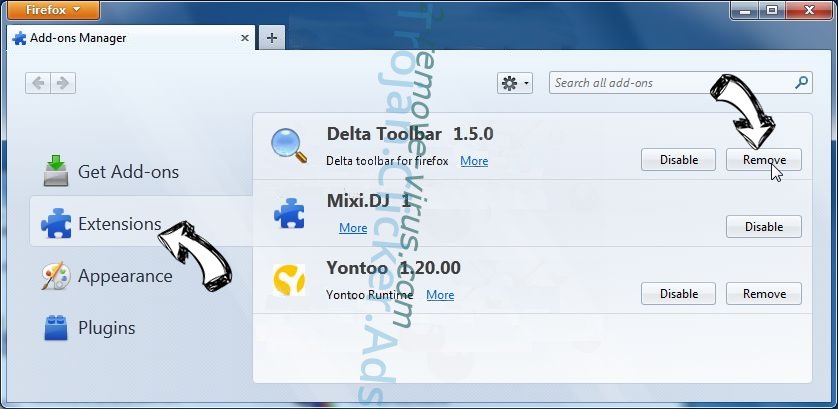
Change Mozilla Firefox homepage if it was changed by virus:
- Tap on the menu (top right corner), choose Options.

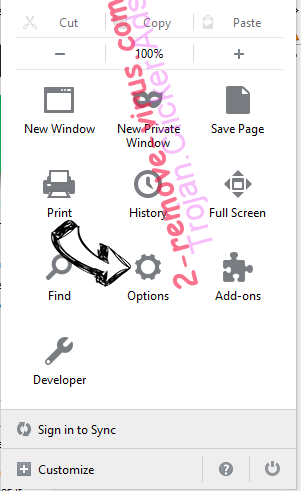
- On General tab delete malicious URL and enter preferable website or click Restore to default.

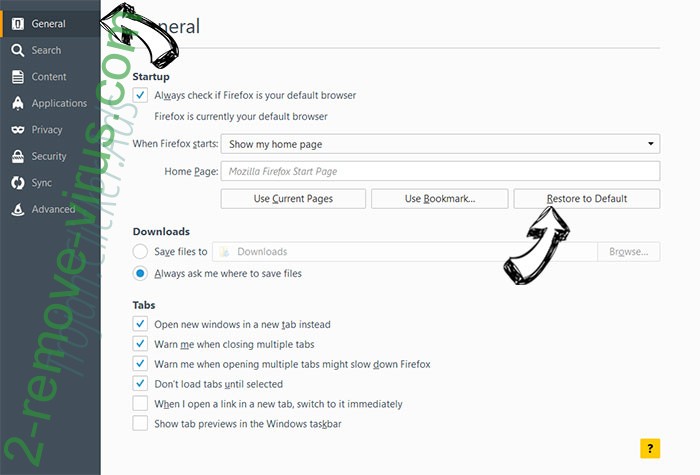
- Press OK to save these changes.
Reset your browser
- Open the menu and tap Help button.

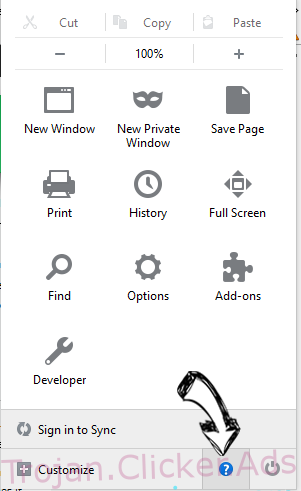
- Select Troubleshooting Information.

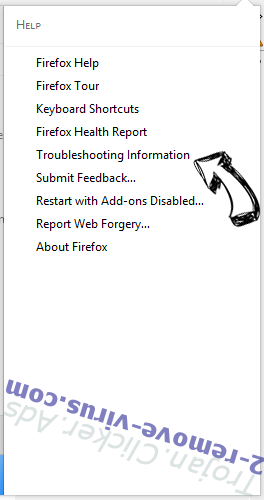
- Press Refresh Firefox.

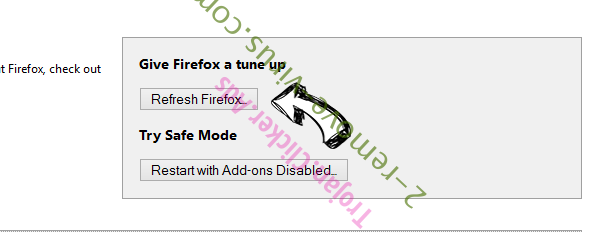
- In the confirmation box, click Refresh Firefox once more.

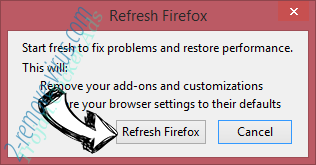
- If you are unable to reset Mozilla Firefox, scan your entire computer with a trustworthy anti-malware.
Uninstall QuickCouponSearch from Safari (Mac OS X)
- Access the menu.
- Pick Preferences.

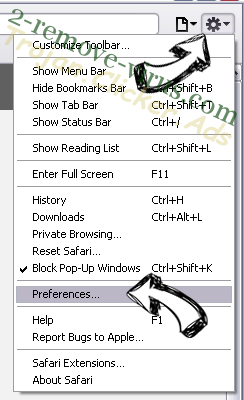
- Go to the Extensions Tab.

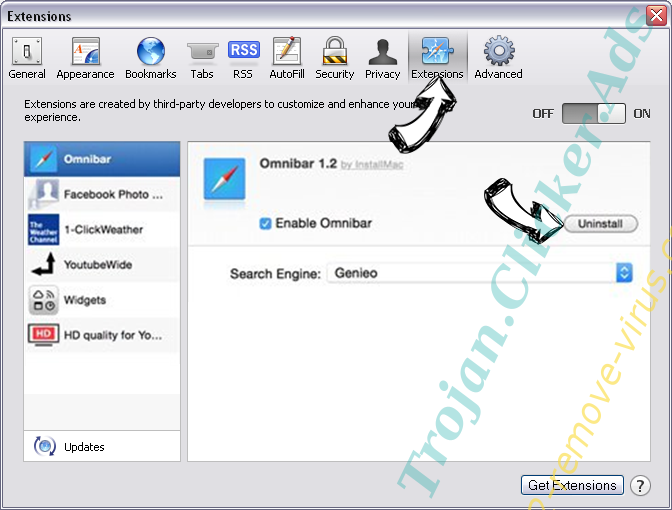
- Tap the Uninstall button next to the undesirable QuickCouponSearch and get rid of all the other unknown entries as well. If you are unsure whether the extension is reliable or not, simply uncheck the Enable box in order to disable it temporarily.
- Restart Safari.
Reset your browser
- Tap the menu icon and choose Reset Safari.

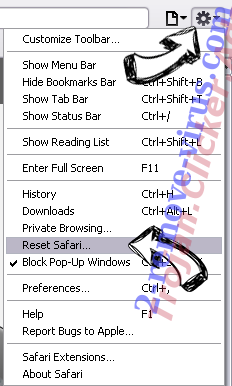
- Pick the options which you want to reset (often all of them are preselected) and press Reset.

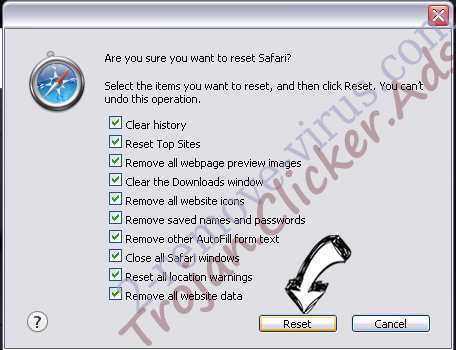
- If you cannot reset the browser, scan your whole PC with an authentic malware removal software.
Site Disclaimer
2-remove-virus.com is not sponsored, owned, affiliated, or linked to malware developers or distributors that are referenced in this article. The article does not promote or endorse any type of malware. We aim at providing useful information that will help computer users to detect and eliminate the unwanted malicious programs from their computers. This can be done manually by following the instructions presented in the article or automatically by implementing the suggested anti-malware tools.
The article is only meant to be used for educational purposes. If you follow the instructions given in the article, you agree to be contracted by the disclaimer. We do not guarantee that the artcile will present you with a solution that removes the malign threats completely. Malware changes constantly, which is why, in some cases, it may be difficult to clean the computer fully by using only the manual removal instructions.
